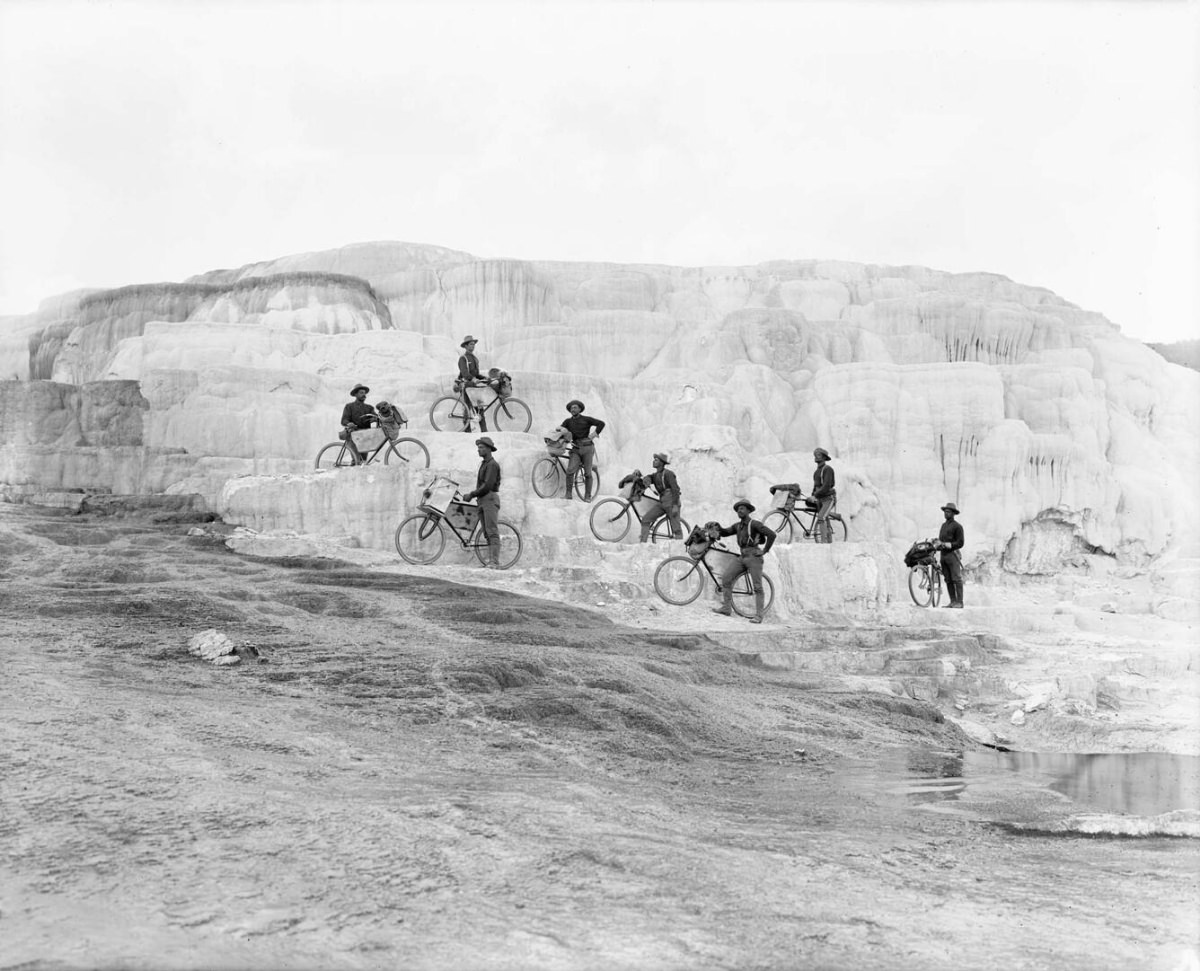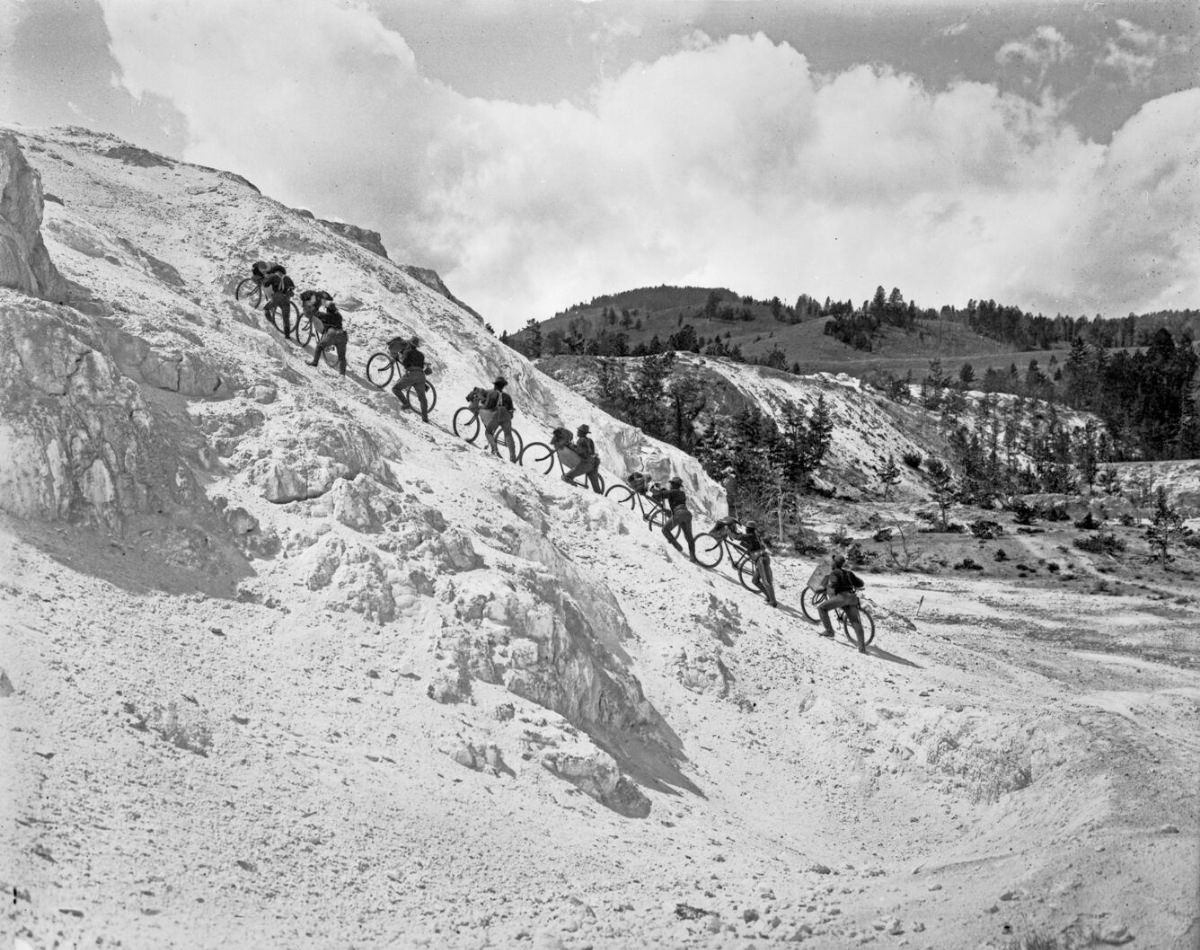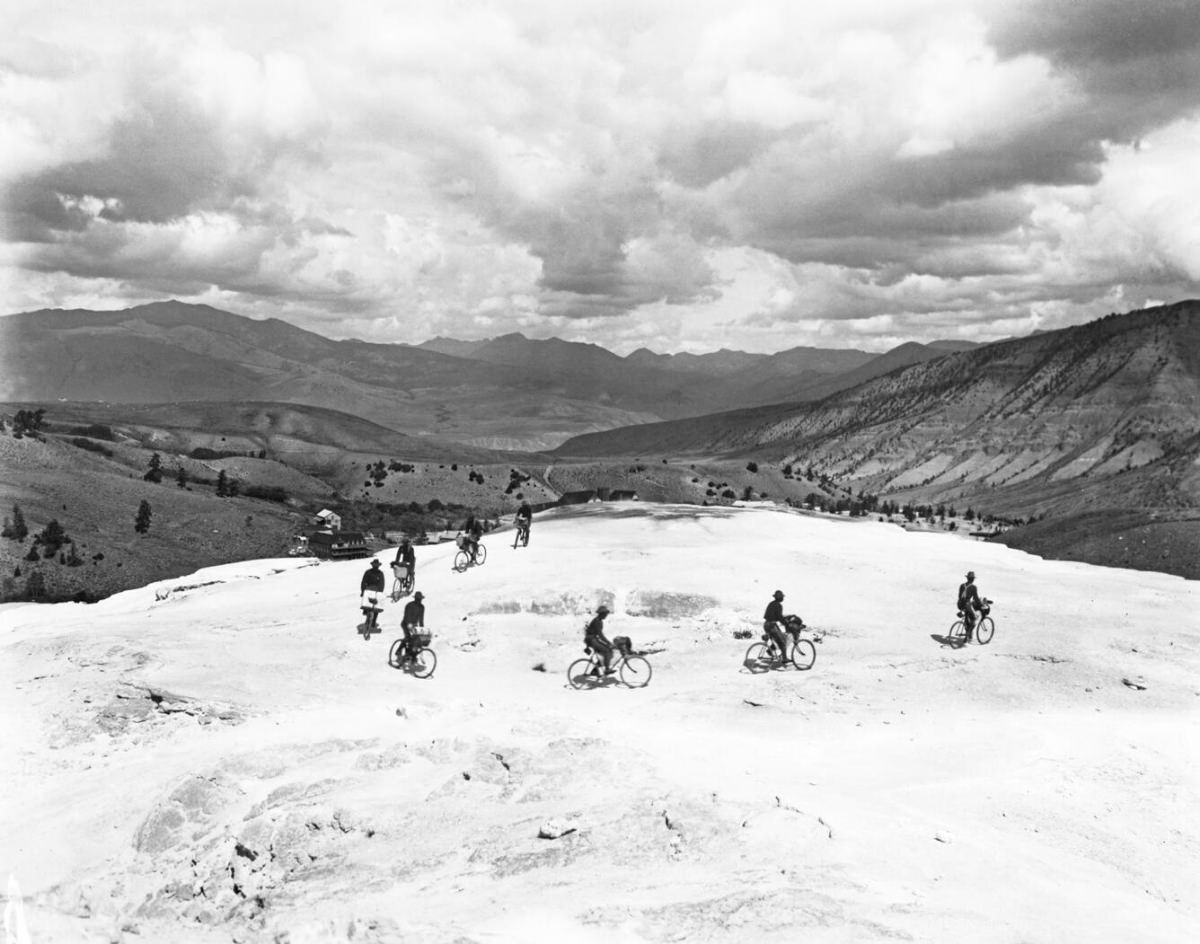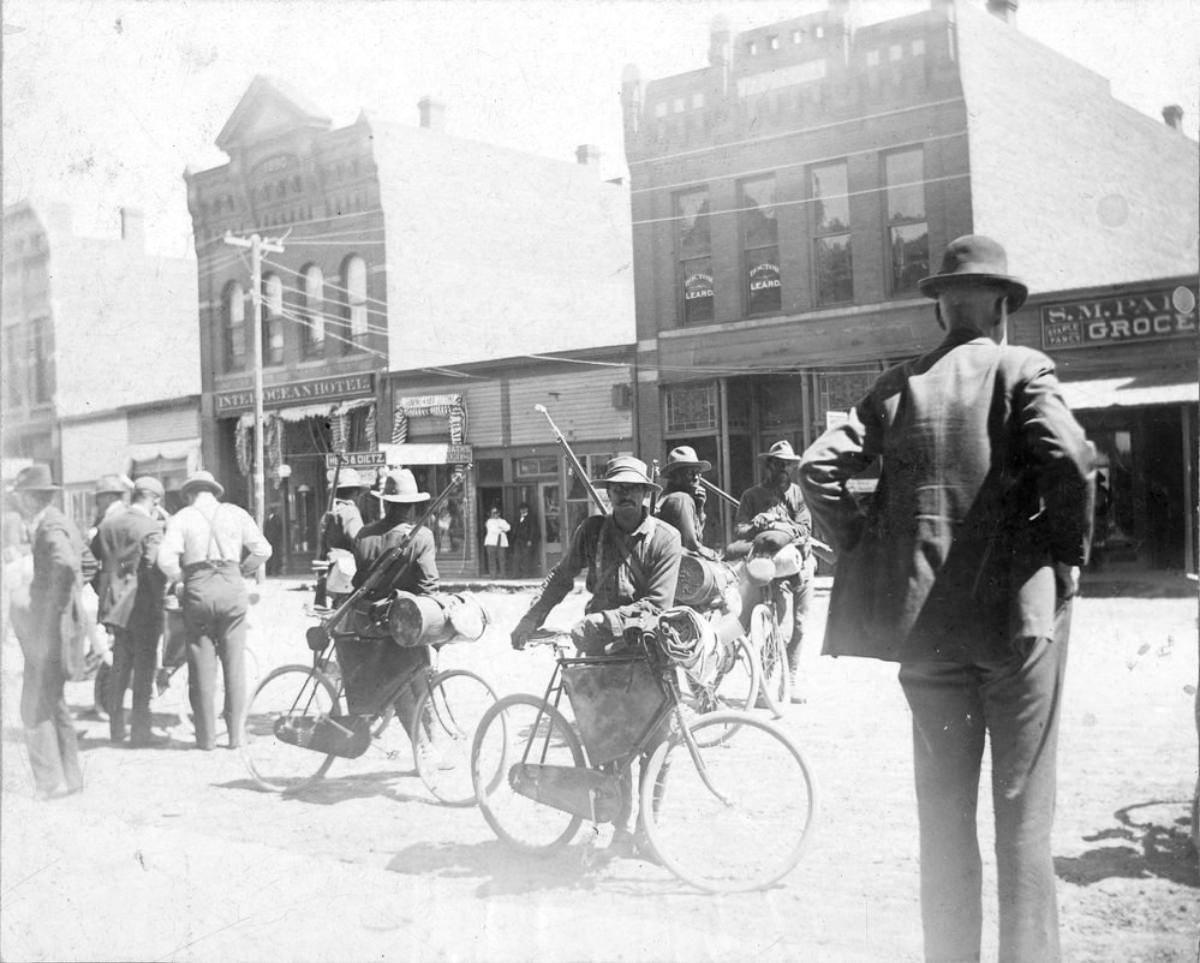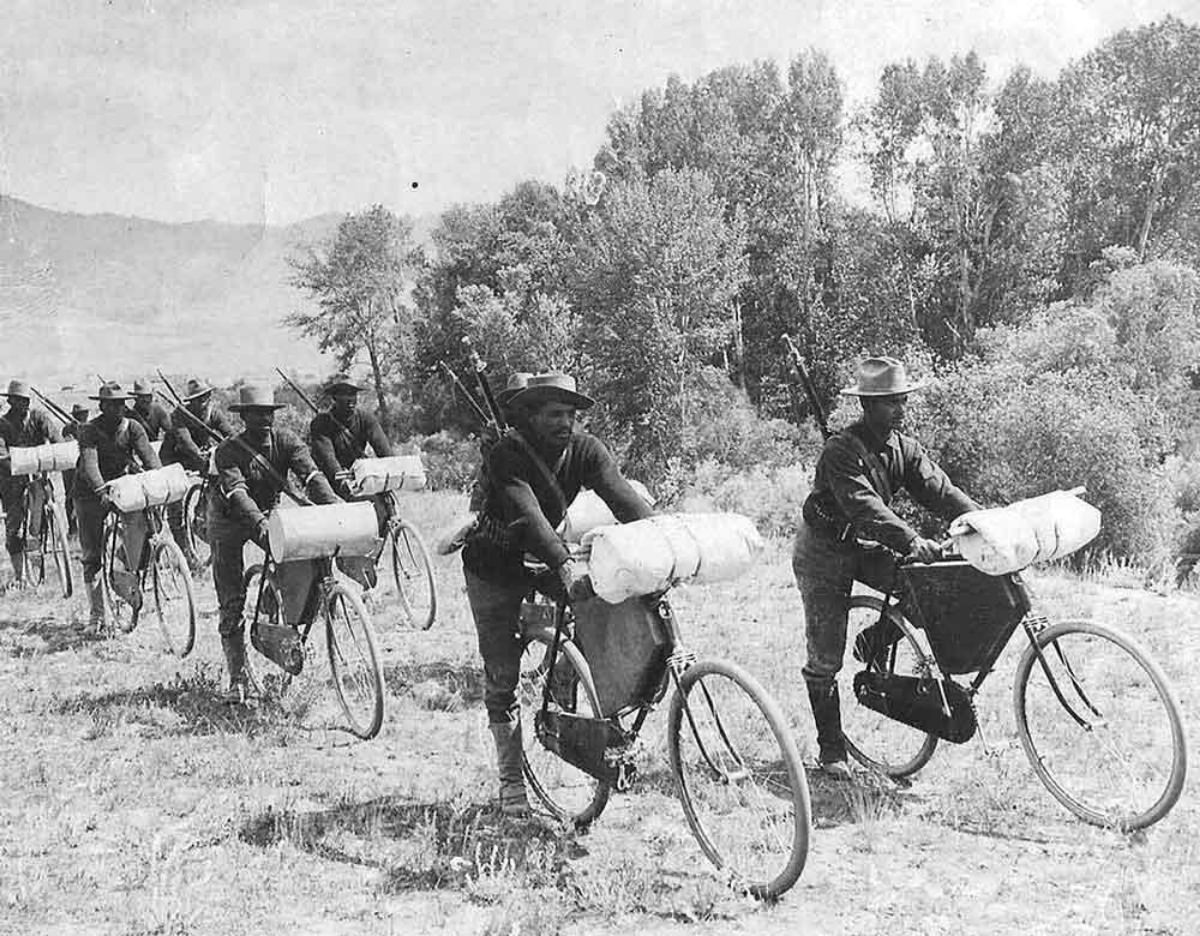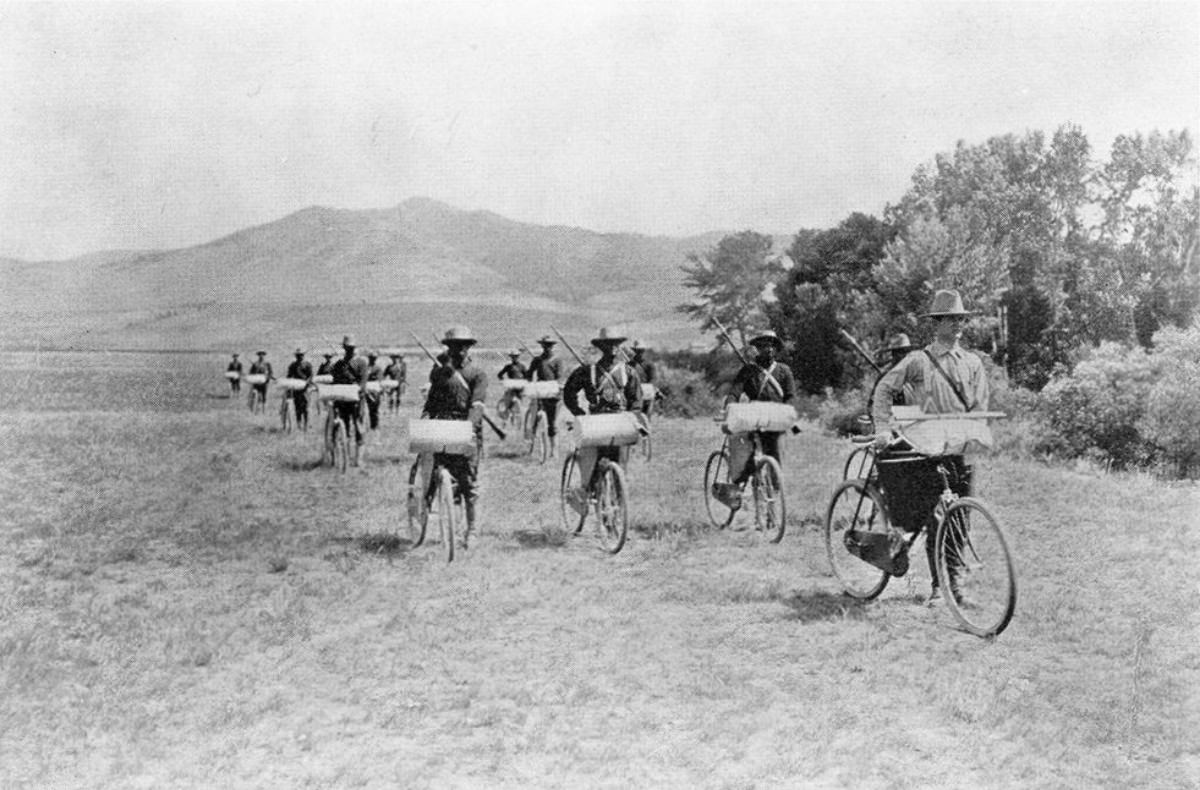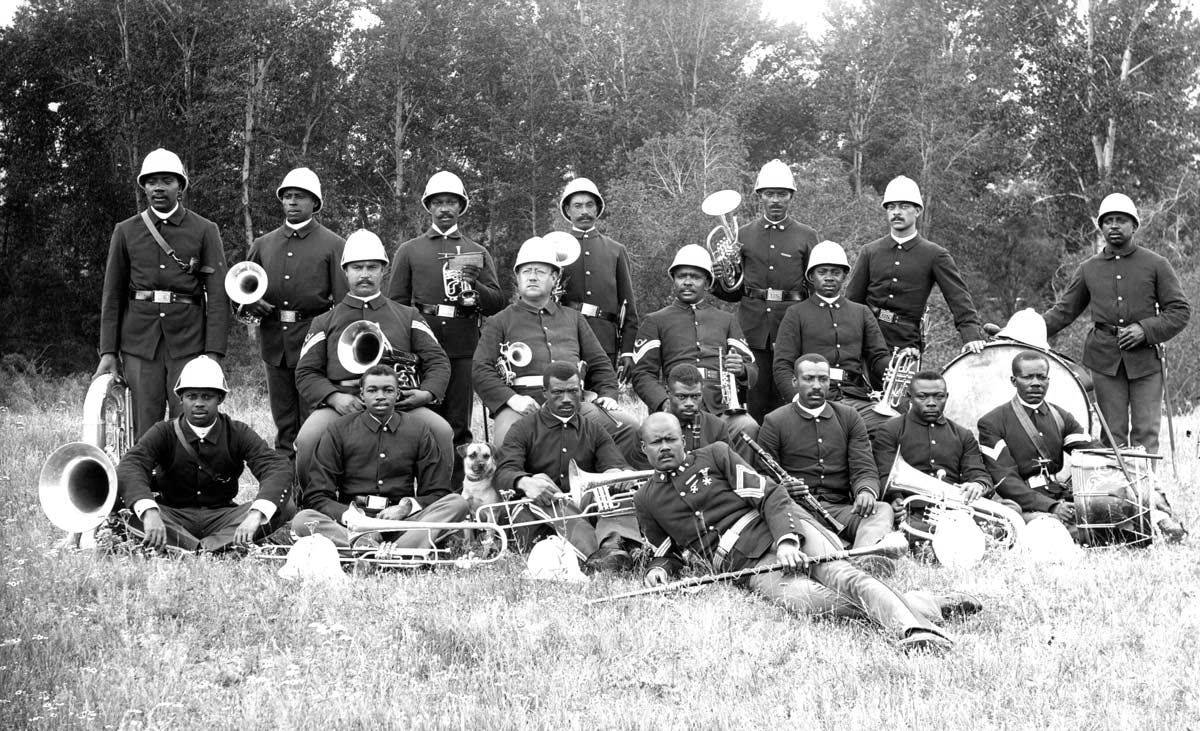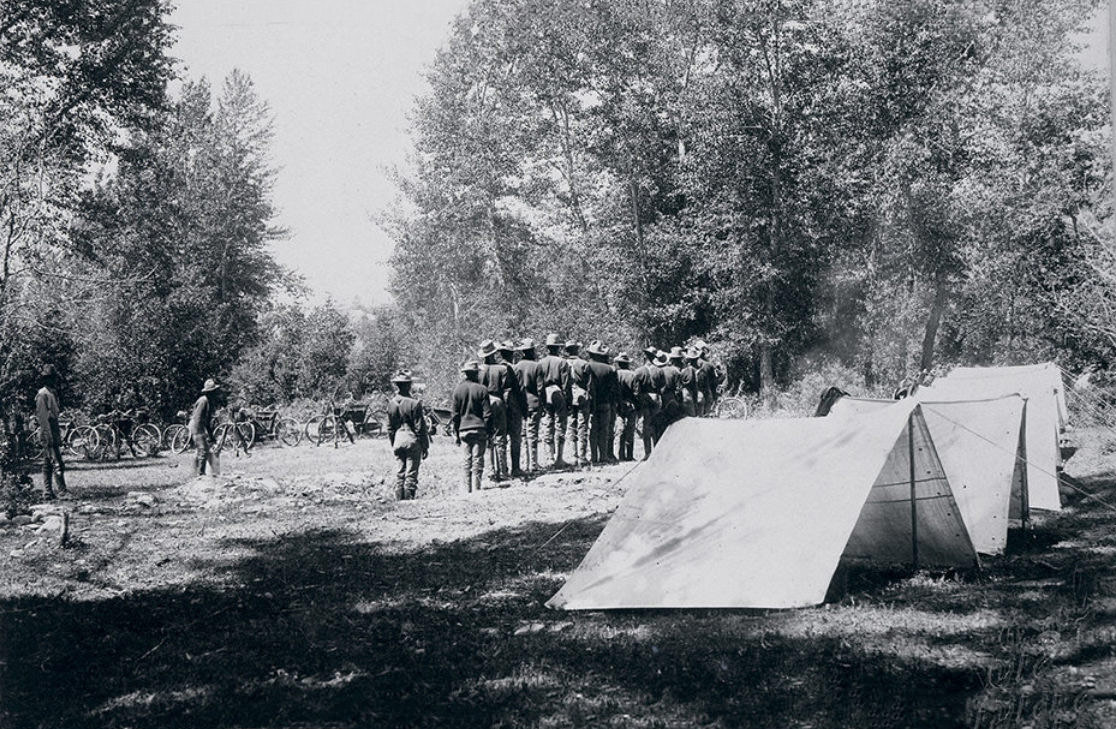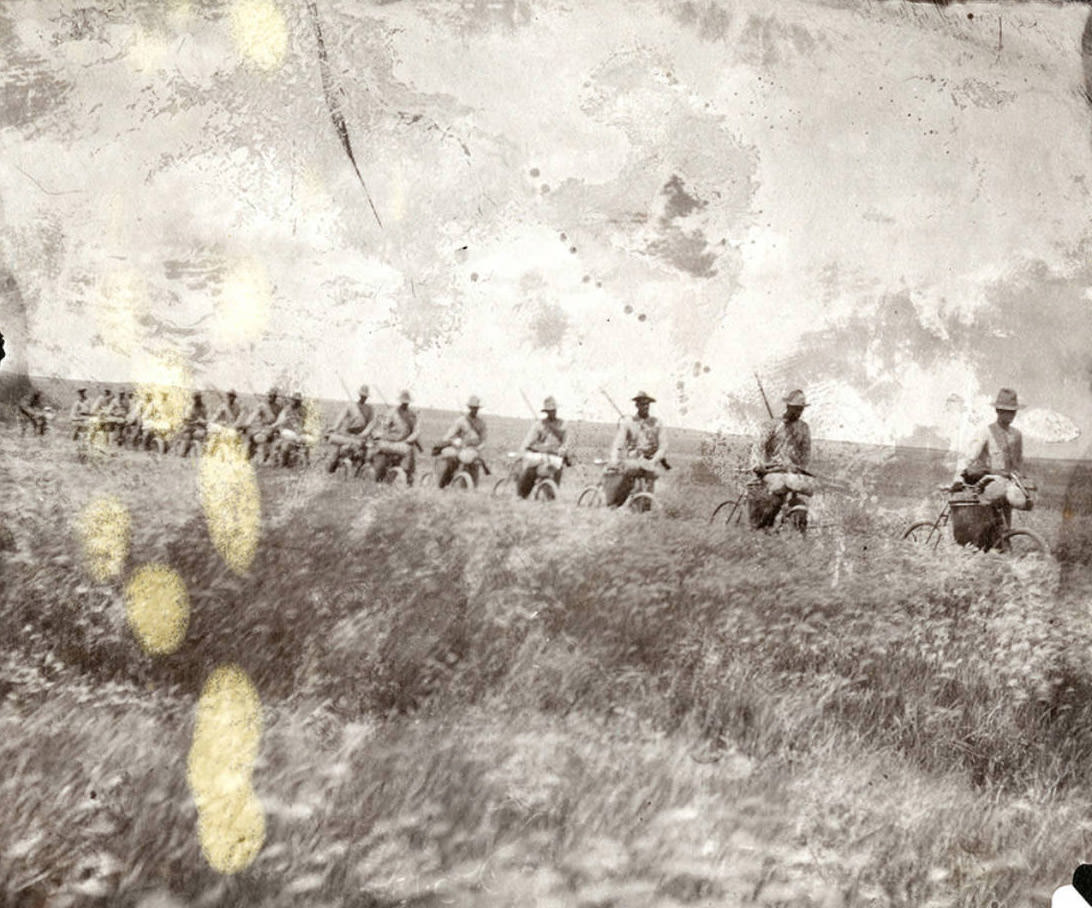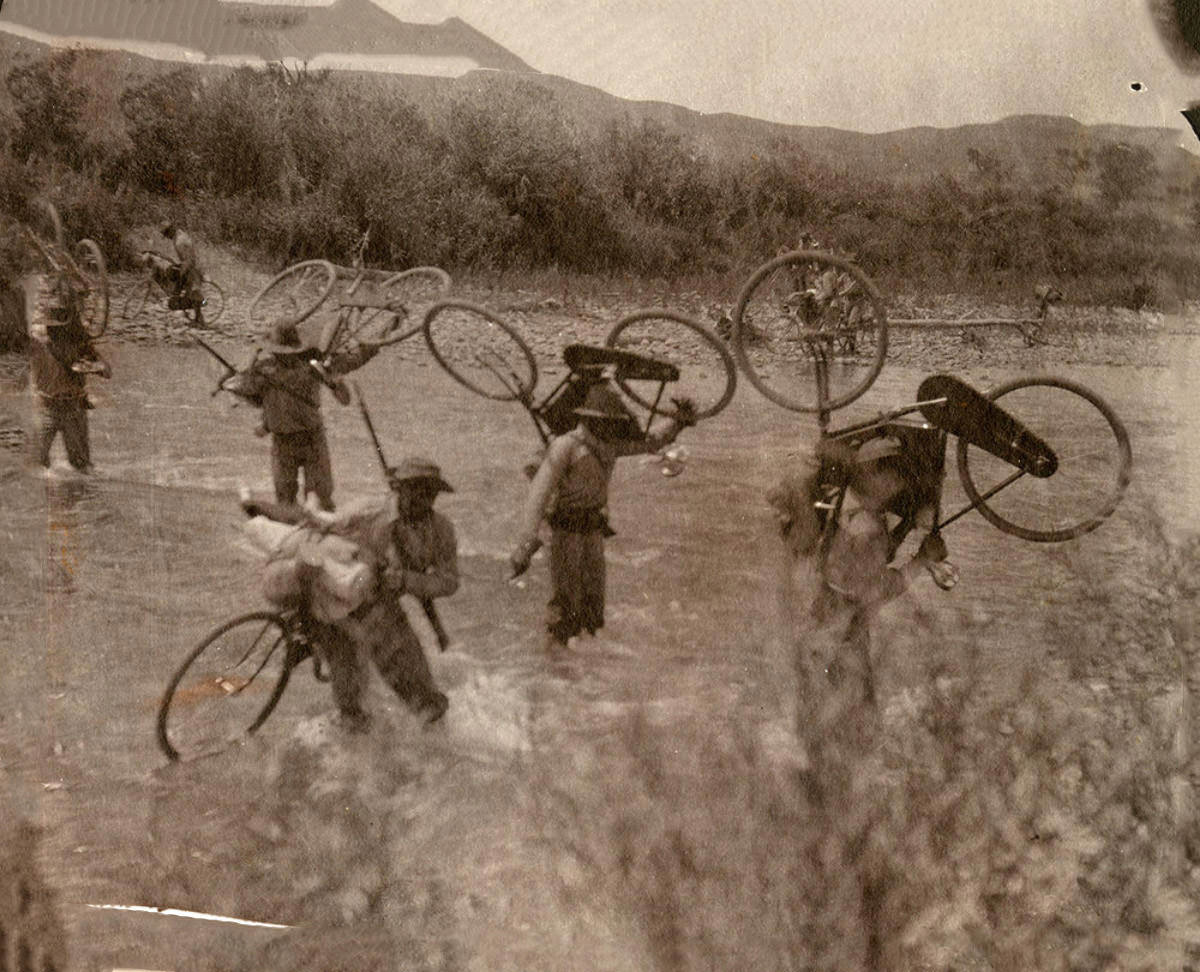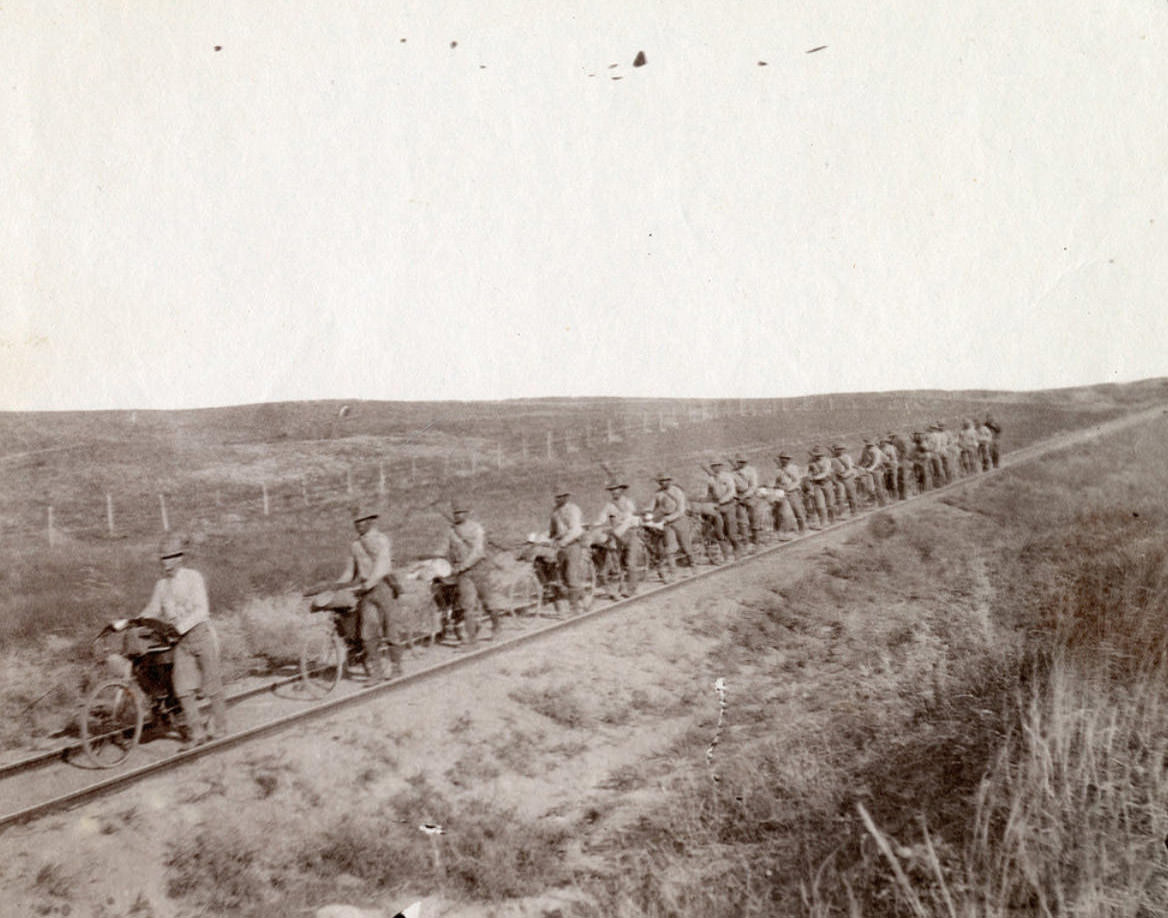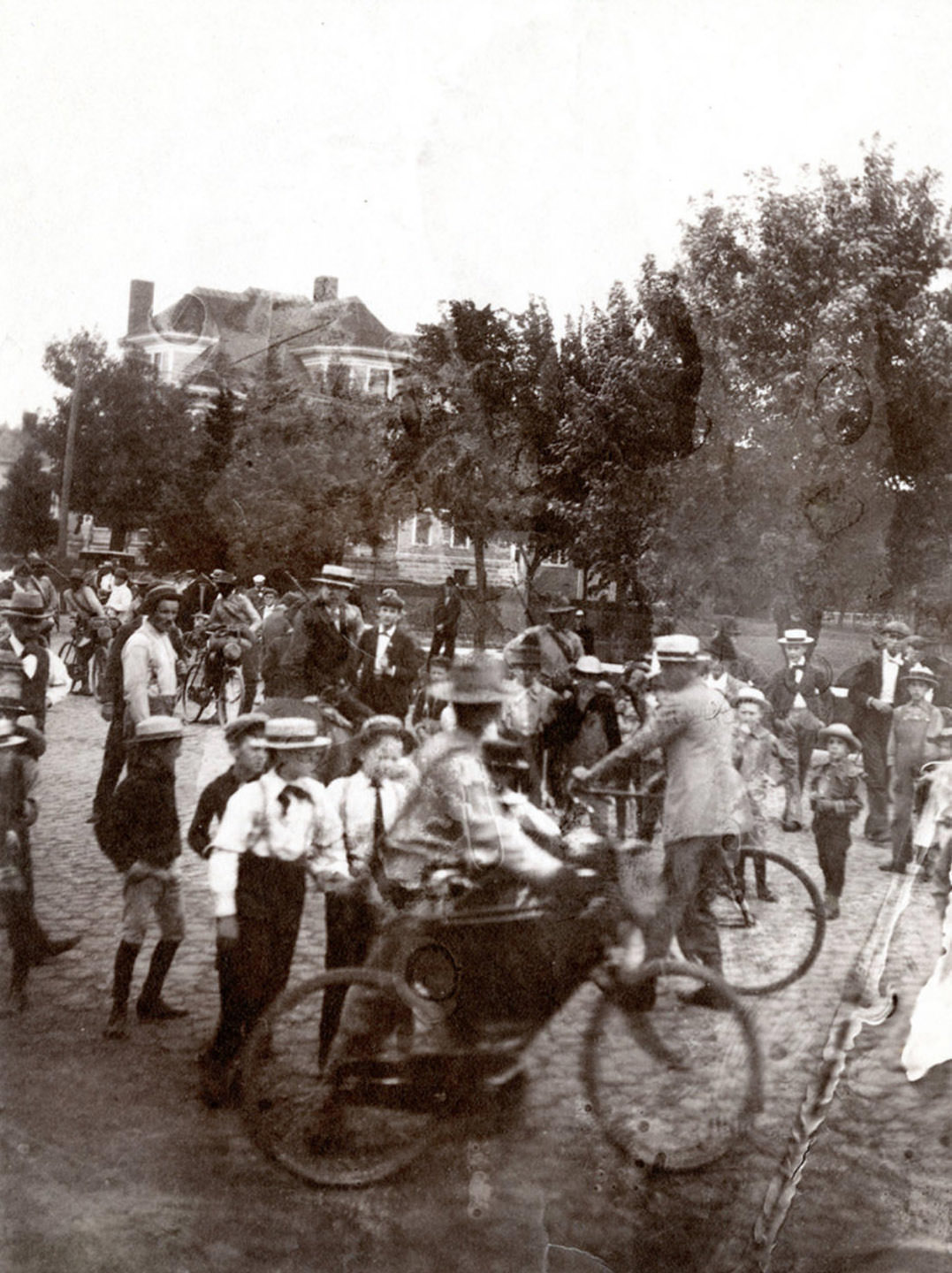Founded in 1896, the 25th Infantry Bicycle Corps was a unit of black soldiers commanded by a white officer, Lt. James A. Moss, who toured from Missoula, Montana, to Saint Louis, Missouri, to test the combat effectiveness of bicycle-mounted troops. Major General Nelson Miles, a West Point graduate and avid cyclist who held his black enlisted men in high regard, wrote to Moss about his interest in bicycle warfare.
A keen observer of the bicycle’s military potential, Miles placed Moss in command of a special unit to test it. Lieutenant Moss was accompanied by twenty black enlisted men, including 1st Sgt. Mingo Sanders and a white medic. The first ride would take place from Fort Missoula to Yellowstone National Park in 1896, followed by a ride from the fort across the Rocky Mountains and across the Great Plains to Saint Louis in 1897. The riders brought along reporter Edward Boos to help document the trip. Spalding Bicycle Company of Springfield, Massachusetts, provided the bicycles.
A crowd of townspeople cheered the Bicycle Corps on as they left Ft. Missoula on June 14, 1897. A muddy road and fresh snow slowed their progress as they crossed the continental divide. They followed the Missouri River into the Gallatin Valley when the riders left the mountains. They attracted much attention and interest as they rode through Bozeman, Montana. Then they crossed the Bridger Mountains, traveled along the Yellowstone River to Billings, Montana, and finally made their way to the Battle of Little Big Horn and into Wyoming. Inclement weather almost led to disaster as fatigue, and poor visibility forced the riders to become lost, and they barely made it to Moorcroft, Wyoming. Their journey from Moorcroft to Nebraska was further hampered by extreme heat and a water shortage because the only available water sources were contaminated with alkali. As a result, many of the men became ill. The riding conditions improved as the men crossed into Missouri. However, the locals grew more hostile. They refused to let the men camp on their farms, citing the Union Army. Eugene Jones left the Corps in Missouri and returned to Montana. After crossing the Mississippi River on July 24, the Corps was escorted into Saint Louis by the Saint Louis Wheelmen, a local bicycle club.
While the Corps’ arrival was met with much excitement in the local community, military interest had waned. Moss’ proposal for the riders to continue to Saint Paul, Minnesota, was denied. The bicycles were returned to Spalding Company, and the soldiers returned by train to Montana. During the Spanish-American War, the 25th Infantry was deployed to Cuba.


